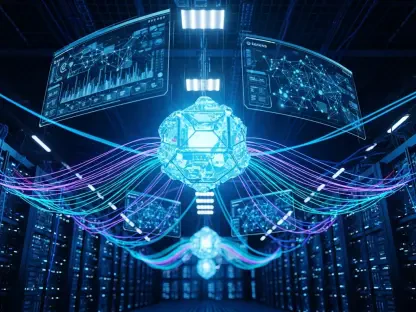Setting the Stage for AI’s Market Impact
In the fast-evolving tech landscape of 2025, a staggering development has captured the attention of industry watchers: Amazon’s decision to cut up to 30,000 corporate jobs, representing roughly 10% of its corporate workforce, signaling a profound shift. This move, one of the largest workforce reductions in the company’s recent history, is not merely a reaction to economic pressures but a bold indicator of artificial intelligence (AI) reshaping the very foundation of tech markets. The purpose of this analysis is to dissect how AI-driven strategies are influencing operational models, workforce dynamics, and competitive positioning within the sector. By examining Amazon’s actions as a microcosm of broader trends, this exploration aims to uncover critical insights into market shifts and future trajectories. The importance of this analysis lies in understanding how automation is becoming a pivotal force, compelling companies to rethink traditional structures while navigating the balance between efficiency and human capital.
Unpacking AI-Driven Market Trends and Projections
Amazon’s Strategic Pivot to Automation
Amazon’s substantial layoffs underscore a deliberate pivot toward AI as a core driver of operational efficiency. The company has aggressively integrated AI tools to automate routine functions across departments, from human resources data management to logistical coordination within Amazon Web Services (AWS). This strategic focus has resulted in measurable cost reductions and productivity gains, positioning Amazon as a leader in leveraging technology to streamline operations. Market data suggests that such automation can reduce operational expenses by up to 20% in large tech enterprises, a trend that Amazon exemplifies through its internal reforms. As the company continues to refine these technologies over the next few years, from 2025 to 2027, projections indicate a potential further reduction in workforce dependency, signaling a transformative shift in how tech giants allocate resources.
Workforce Dynamics in the Age of AI
The integration of AI is not without its challenges, particularly in reshaping workforce dynamics across the tech market. Amazon’s layoffs highlight a growing tension between technological advancement and job security, as roles once deemed essential are now handled by generative AI systems. This trend is mirrored in other major players like IBM and Accenture, where automation has similarly led to workforce reevaluations. Analysts predict that by 2027, up to 30% of routine tech roles could be automated, pushing the market toward a demand for skills in AI oversight and strategic innovation. The displacement of traditional roles is creating a ripple effect, prompting a need for reskilling programs to prepare employees for hybrid roles that blend human creativity with machine efficiency, a critical area for market adaptation.
Return-to-Office Policies Amid Digital Shifts
Adding complexity to the market landscape is Amazon’s stringent return-to-office (RTO) policy, fully implemented in 2025, mandating a five-day onsite workweek. Contrary to expectations of widespread attrition, the policy has seen limited pushback, with non-compliant employees facing termination framed as voluntary exits. This approach stands in contrast to more flexible hybrid models adopted by competitors, raising questions about the relevance of physical presence in an era where AI enables remote task execution. Market observers note that such policies could risk alienating top talent in a highly competitive sector, yet they may also aim to preserve collaborative environments that technology cannot fully replicate. This duality reflects a broader market debate on balancing human interaction with digital transformation.
Global and Sectoral Variations in AI Adoption
AI’s impact on the tech market varies significantly across regions and sectors, creating a fragmented landscape of adoption and adaptation. In the U.S., rapid AI integration drives aggressive workforce restructuring, as seen with Amazon, while European markets face slower transitions due to stricter labor regulations. Sectorally, cloud computing and e-commerce—key areas for Amazon—lead in automation adoption, with predictive analytics enhancing supply chain efficiencies. Emerging market forecasts suggest that by 2027, generative AI could dominate operational frameworks in up to 40% of tech firms globally, though the pace will depend on regulatory and cultural factors. This uneven adoption underscores the need for tailored strategies to address regional disparities and sector-specific challenges in the tech ecosystem.
Future Projections: AI as a Market Game Changer
Looking ahead, AI is poised to redefine the tech market with innovations such as advanced natural language processing and autonomous decision-making systems. These technologies could further diminish the need for human intervention in complex tasks, potentially automating up to 50% of current operational roles by the end of this decade. Economic pressures and potential regulatory oversight on mass layoffs may compel firms to adopt phased AI integration, balancing efficiency with social responsibility. Market projections indicate a hybrid future where AI handles repetitive functions, freeing human talent for strategic and creative contributions. This shift, while promising, hinges on proactive investments in education and retraining to align workforce capabilities with evolving market demands.
Reflecting on AI’s Market Legacy and Strategic Pathways
Looking back, the analysis of Amazon’s layoffs and the broader embrace of AI in 2025 revealed a tech market at a critical juncture, where efficiency-driven automation reshaped competitive landscapes and workforce structures. The profound impact of these trends highlighted the dual nature of AI as both a catalyst for growth and a disruptor of traditional employment models. Moving forward, strategic pathways emerged as essential for navigating this transformation. Companies were urged to prioritize upskilling initiatives, focusing on areas like AI ethics and data strategy to maintain a competitive edge. Additionally, adopting a balanced approach to automation—integrating technology while supporting employee transition—proved vital to mitigating market backlash. For industry leaders, the lesson was clear: invest in adaptability and human-AI collaboration to transform disruption into a sustainable advantage in the ever-evolving tech arena.









